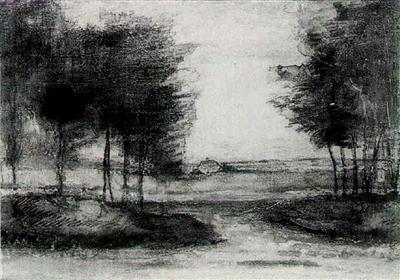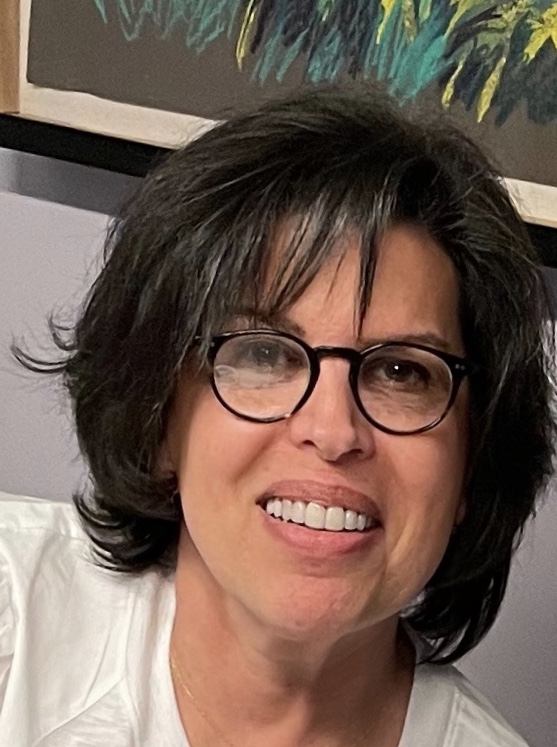
Img:
Landscape, Vincent van Gogh, 1883
Everyday Psychoanalysis Blog
Title:
Trauma Transmission Resides Across Multiple Generations
Author:
Jill Salberg, Ph.D., A.B.P.P.
Over the past two decades Psychoanalysis has steadily been theorizing about the hauntings inherent in trans-generational transmissions. It is no longer unusual to read papers where ghosts inhabit the minds of patients and analysts. These hauntings allow us to investigate how traumas, not fully processed or metabolized in one generation become hauntings transmitted to another generation. Spectral presences have taken up residence within the next generations’ minds, pre-occupying their thoughts and affecting behavior. While important work has been done in the separate fields of trauma, testimony, witnessing, and psychoanalytic theory, we are also at a point currently in psychoanalysis in which new models of mind have shifted the paradigm. We have come to think about psychic pain and symptoms, problems in relationships, the psyche/soma connection and how history, culture, race, and gender enter our lives in a more expansive, interpenetrating way. Additionally, we now see how multiple generations carry the traumas, losses and pain of earlier ones.
First described by French analysts Abraham and Torok (1994) while writing about phantoms, they understood these hauntings as exquisite solutions to a mourning that had been denied and refused. Maurice Apprey (1998) drew upon their work when he began writing about transgenerational hauntings in descendants of slaves. He understood these transmissions as projects compelling a later generation to attempt to complete, in his terms, the ‘errands’ of the prior generation. These are seen in fragments of family stories, dissociated acts and traumatic reproductions of events. Oftentimes these re-enactments further cause ruptures, losses, violence and the isolating loneliness and fear found in the children of traumatized parents and later in their adult selves. Generation after generation reproducing, if not directly the same actual events, then in some essential experiential manner aspects of these traumatic experiences. Haydee Faimberg, (1998, 2005) developed her conceptualization regarding these transmissions as the parent’s narcissistic appropriation of the child’s identity, a co-opting by the parent of the child’s mind. She termed this a telescoping of generations and believed that the child’s mind is not empty but overfilled with the parent’s history and unbearable feelings.
In trying to understand historical hauntings of my patients I have found it useful to integrate the findings from attachment research, trauma literature, and neuroscience with psychoanalytic theories. (See Salberg, 2015, 2019). The violence of trauma fractures someone’s experience of being in the world and pulls at the fabric of attachment, our intrinsic way of feeling safe. When a child’s parent or grandparent has had a trauma, we can assume that their mind has been affected. In whatever way the trauma has imprinted them, some part of them will not be fully accessible for this child. It is this rupture inside of someone who is parenting a child that I believe is sensed by the child and is how trauma, both in its presence and its experience of emptiness can easily become transmitted across the generations. Additionally, what often is also seen in the parent’s resilience and ways in which trauma has not come to define them.
Thus I believe and have seen in my work with patients who have trauma in their histories that oftentimes some essential piece of the original traumatic event and the survival mechanisms becomes enacted in their lives. Behavior can be a way of remembering, especially when the mind has been overwhelmed by trauma and dissociation, keeping out of consciousness a full storyline. We relive what we are trying not to remember and can never fully forget.
There is great need for intervention and psychotherapeutic and psychoanalytic treatment to help people heal from trauma, draw upon their internal resources of resilience and prevent further transmissions of these internalized traumatized states to the later generations. Research findings suggest that psychotherapy and psychoanalytic treatments offer the safety necessary that allows someone to begin to talk about what has been endured. This needed processing of traumatic experiences happens with a caring therapist who can then witness, recognize and help the person to metabolize their traumatic experiences, mourn and learn how to better regulate their emotional reactions. Additionally, family and couple therapies help people learn how to talk about their traumatic histories in ways that are not overwhelming and allow empathic dialogues to open up between partners and grow. Being able to find empathy in their therapist becomes the beginning of self-empathy and self-care, both crucial for healthy functioning.
REFERENCES
Abraham, N. & Torok, M. (1994).
The shell and the kernel: Renewals of psychoanalysis (N. Rand, Ed. & Trans.). University of Chicago Press.
Apprey, M. (1998).
Staging and transforming historical grievances from cultural memory to a reconstructable future. Journal for the Psychoanalysis of Culture and Society, 3(1), 81-89.
Faimberg, H. (1998).
The telescoping of generations: Genealogy of certain identifications. Contemporary Psychoanalysis, 24, 99-117.
Faimberg, H. (2005).
The telescoping of generations: Listening to the narcissistic links between generations. Routledge.
Salberg, J. (2015).
The texture of traumatic attachment: Presence and ghostly absence in transgenerational transmission. Psychoanalytic Quarterly, 84(1), 21-43.
Salberg, J. (2019).
Old objects die hard: Generational ruptures. Psychoanalytic Dialogues, 29(6), 637-652.
Biography
 Jill Salberg, Ph.D., A.B.P.P
Jill Salberg, Ph.D., A.B.P.P, is faculty/supervisor at the NYU Postdoctoral Program in Psychotherapy and Psychoanalysis, the Mitchell Center for Relational Studies and a member of IPTAR. Her articles have been published in Psychoanalytic Dialogues, Psychoanalytic Quarterly, International Journal of Psychoanalysis, Contemporary Psychoanalysis, Studies in Gender and Sexuality and Psychoanalytic Perspectives. She is the editor of and contributor to Good Enough Endings: Breaks, Interruptions and Terminations from Contemporary Relational Perspectives (2010) and Psychoanalytic Credos: Personal and Professional Journeys of Psychoanalysts (2022). She has co-edited with Sue Grand, The Wounds of History: Repair and Resilience in the Transgenerational Transmission of Trauma, and Transgenerational Trauma and the Other: Dialogues Across History and Difference, (2017), both books won the Gradiva Award (2018). Their co-written book Transgenerational Trauma: A Contemporary Introduction is forthcoming this Fall 2023 published by Routledge. She is in private practice in Manhattan and online.

Return to
Everyday Psychoanalysis Blog